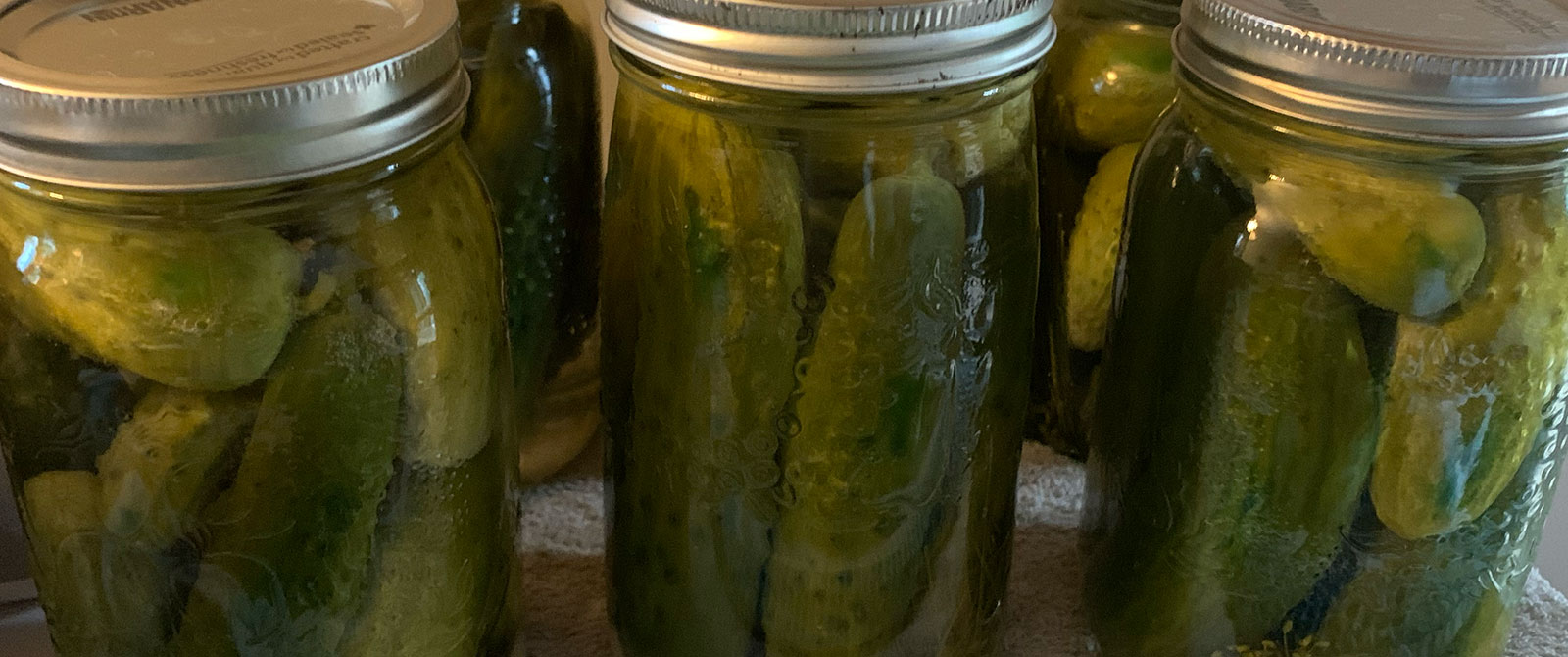Originally published in Lake of the Woods Area News, Volume 55, Number 4, Fall 2025
We all know how fleeting summer in Northwestern Ontario can be. We wait many cold months for the days to warm. We bide our time and make plans while the arduously long spring lumbers along. Summer hits like a firework, leaves explode out of the poplars and turn our world green, insects of all descriptions emerge in all kinds of places. We cram the long days full of friends, family, projects, gardens, and adventures.
On the farm, summer is an ecstatic and exhausting time. Nature and long planned goals are bearing fruit. We are harvesting tons of produce and getting them into our customers hands and onto their dinner tables. We gorge ourselves on fresh produce.
As amazing as this abundance is, we know that before too long the days will shorten and get colder.
The plants will slow down and eventually succumb to frost. But we want to eat our own produce all year long! Fortunately, when living with the seasons, we learn that we can turn short term abundance into long term sustenance through a variety of food preservation techniques.
Food preservation options are available to even the most novice of gardeners and food preservers. The basic concept of food preservation is that we are converting the food to a state that inhibits the growth of micro-organisms that would cause us illness or render the food unpalatable. The methods of preservation that I use are canning, freezing, fermenting, cold storage, and dehydrating. There are pros and cons to each method, and all methods have entry level options. I’ll give a brief overview of each.
Canning
Many people are intimidated by canning. This is likely because when done improperly it can lead to food spoilage and illnesses like botulism. The good news is it is easy to do properly with a small amount of research and also simple to inspect a canned food for signs of spoilage. Canning creates a sealed environment and kills any microorganisms through heat, acidity, or both. Follow a guaranteed safe recipe either from a university extension or from a canning jar company. Pickles or tomato sauce are a simple entry points into canning because both use vinegar or lemon to provide the necessary acidity, along with the required sterilization and sealing.
Freezing
Many people’s first foray into food preservation is freezing. Freezing doesn’t require any specialized tools other than a freezer. Most vegetables (excluding onions, tomatoes and peppers) should be blanched before being frozen. Blanching is putting the veggies into boiling water for 2-4 minutes. Blanching preserves colour, flavour, and texture of produce. Freezing beans is simple and a special treat in mid-winter.
Fermenting
I love fermentation because with this food preservation method we are actually encouraging microorganism growth. Fermentation, like canning, also requires a sealed vessel. When we ferment vegetables, we encourage certain beneficial microorganisms to completely colonize the food that is in the vessel, and in doing so no other microorganisms are able to live in the food. By following a recipe, mixing vegetables in brine, and keeping them in an anaerobic state for a period of time, we can make delicious ferments. Sauerkraut is one of the most common and an easy entry for fermenting.
Cold storage
There are many vegetables that can be stored for many months simply by controlling temperature and humidity. Potatoes, carrots, beets, and cabbage are best stored in a refrigerator; winter squash and garlic can be kept somewhere cool (approximately 12°C) and dry. It can take a little bit of practice to get the conditions just right, but when done properly, produce can last amazingly long this way.
Dehydrating
Dehydrating can be done in a dehydrator, the lowest setting in an oven, or in a solar dehydrator. Almost anything can be dehydrated and stored long term, providing it does not have a high fat content. The trick for fruits and veggies is to slice them thinly and make sure everything has lots of air around them. Herbs are great dehydrated as well. Kale and other greens can be dehydrated, ground up, and added to smoothies. Once your produce is fully dry, store it in an airtight container in a cool dark and dry area, such as a cupboard.
Preserving your own produce, or produce you have purchased locally, feels so gratifying. Not only does it foster a sense of self-reliance, but it also brings you into connection with your food year-round. Cooking becomes a game of planning delicious wholesome meals around the preserved food we have available to us. Be safe, try new things, and don’t worry if some things don’t work out, that’s all a part of the learning process.
Some handy resources to help you get started
Canning: bernadin.ca
Freezing: halfyourplate.ca
Cold storage: gardening.usask.ca
Fermenting: gardening.usask.ca
Dehydrating: gardening.usask.ca
